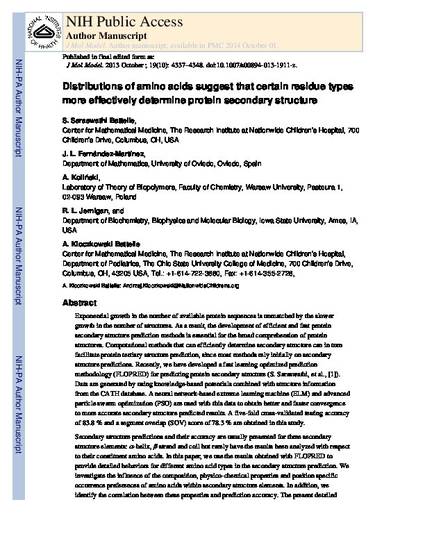
Exponential growth in the number of available protein sequences is unmatched by the slower growth in the number of structures. As a result, the development of efficient and fast protein secondary structure prediction methods is essential for the broad comprehension of protein structures. Computational methods that can efficiently determine secondary structure can in turn facilitate protein tertiary structure prediction, since most methods rely initially on secondary structure predictions. Recently, we have developed a fast learning optimized prediction methodology (FLOPRED) for predicting protein secondary structure (S. Saraswathi, et al., [1]). Data are generated by using knowledge-based potentials combined with structure information from the CATH database. A neural network-based extreme learning machine (ELM) and advanced particle swarm optimization (PSO) are used with this data to obtain better and faster convergence to more accurate secondary structure predicted results. A five-fold cross-validated testing accuracy of 83.8 % and a segment overlap (SOV) score of 78.3 % are obtained in this study.
Secondary structure predictions and their accuracy are usually presented for three secondary structure elements: α-helix, β-strand and coil but rarely have the results been analyzed with respect to their constituent amino acids. In this paper, we use the results obtained with FLOPRED to provide detailed behaviors for different amino acid types in the secondary structure prediction. We investigate the influence of the composition, physico-chemical properties and position specific occurrence preferences of amino acids within secondary structure elements. In addition, we identify the correlation between these properties and prediction accuracy. The present detailed results suggest several important ways that secondary structure predictions can be improved in the future that might lead to improved protein design and engineering.
Available at: http://works.bepress.com/robert-jernigan/35/

This is a manuscript of an article published as Saraswathi, Saras, Juan Luis Fernández-Martínez, Andrzej Koliński, Robert L. Jernigan, and Andrzej Kloczkowski. "Distributions of amino acids suggest that certain residue types more effectively determine protein secondary structure." Journal of molecular modeling 19, no. 10 (2013): 4337-4348. The final publication is available at Springer via http://dx.doi.org/10.1007/s00894-013-1911-z. Posted with permission.